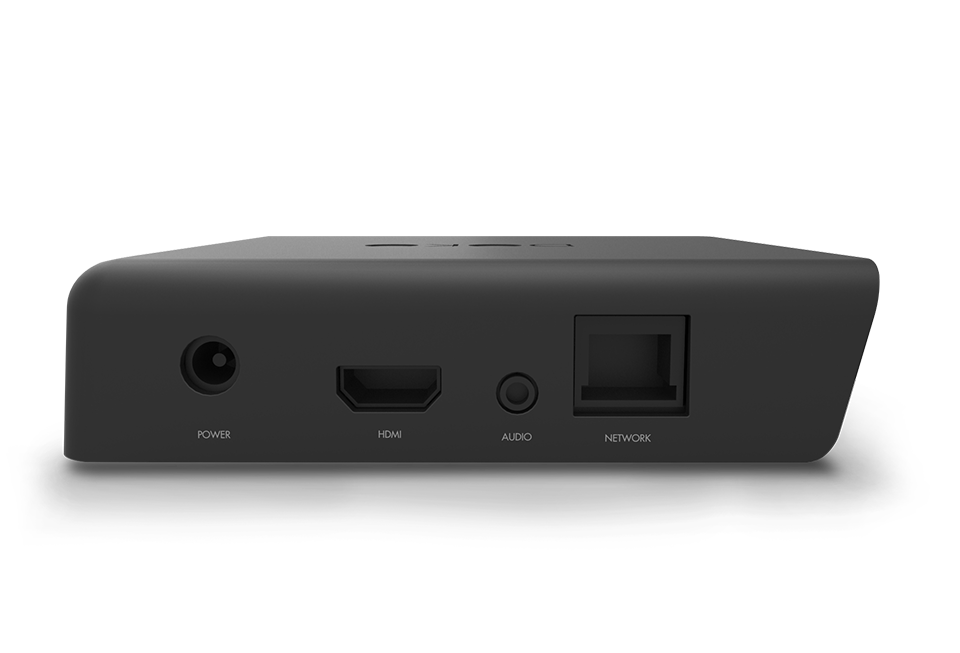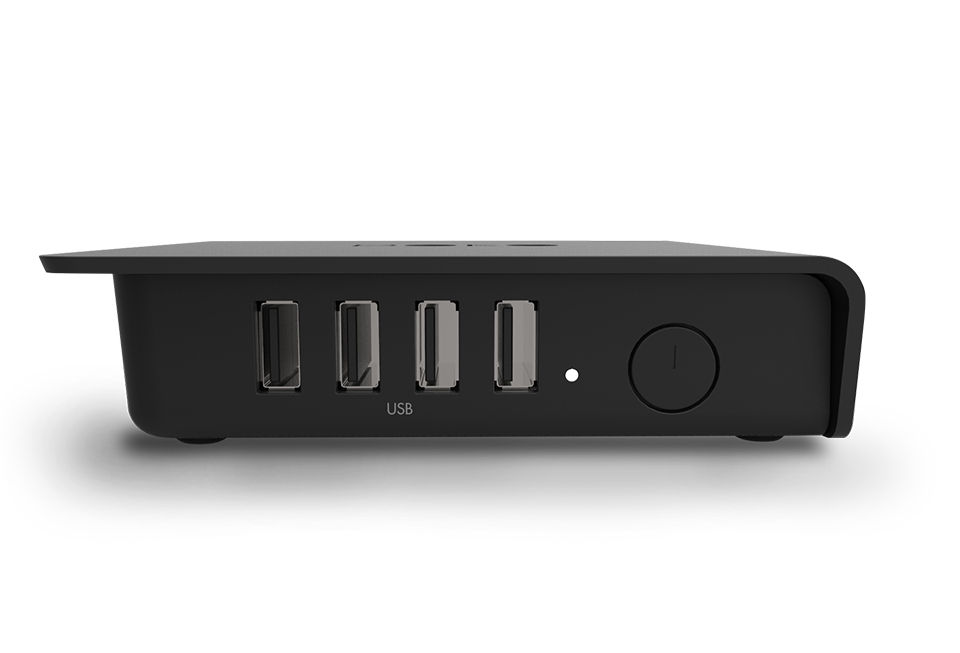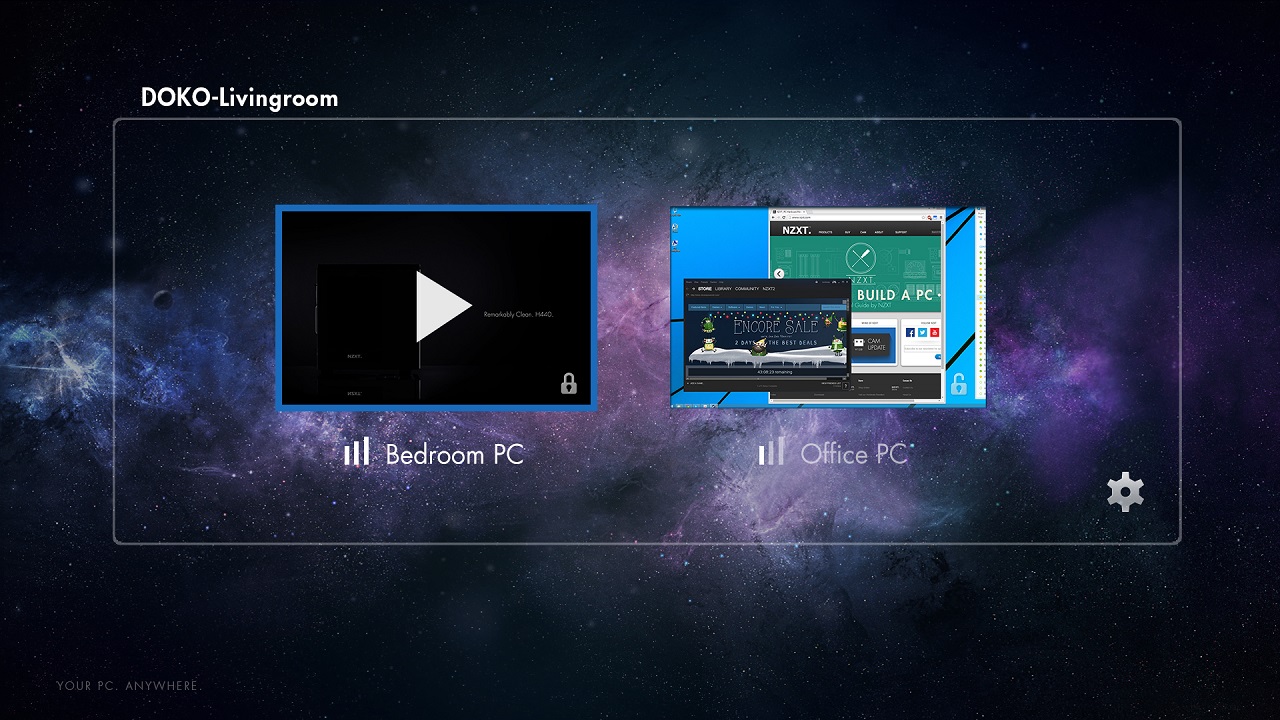NZXT Smartly Made Doko Streamer Dumb
For as much as CES 2015 was about curved displays, IoT, and too many awful Bluetooth speakers and phone cases to count, we found that there was a surprising proliferation of small living room streamers.
Some, like Razer's Forge TV, promise the moon -- PC gaming, Android gaming, TV streaming, and so on -- while NZXT's Doko is the opposite.
There is no kitchen sink here. Simply, the Doko mirrors your PC to your TV. That's it.
But the whole notion makes sense. In fact, we said as much when we learned of the Forge TV, noting that such a device essentially obviates the whole idea of a secondary living room PC (and specifically Steam Machines). But where we were concerned that the Forge TV is trying to do too much, the Doko offers just one thing, and that's really all you need.
NZXT kept the Doko "dumb," and that was probably smart.
The Doko comes with just an Ethernet cable and a power cable. It has four USB 2.0 ports, an Ethernet port, an HDMI port and a single audio port. There is no WiFi on board the Doko, and NZXT told us that was a calculated move; the team was concerned that over WiFi, the user experience could be seriously hampered and opted to go with a gigabit wired connection only.
NZXT did not include an HDMI cable in the box, which is slightly annoying. However, it's likely that you have a spare one lying around anyway, and by omitting the cable, NZXT was able to keep the price point at just $99.99.
Get Tom's Hardware's best news and in-depth reviews, straight to your inbox.
You get 1080p HD at 30 fps over the Doko, and NZXT claims that latency is at 50-80 ms. Because the onboard USB ports all feature USBoverIP, connecting USB devices to the Doko is supposed to be like plugging them directly into your PC.
Once you have your Doko connected to your TV and to your network, it will automatically detect any computer that is both connected to your network and has the Doko software installed. From there, NZXT said that you'll have full access to your PC. You can run games, dink around online, run office software, whatever. It supports USB plug and play devices, as well as Xbox 360 controllers. (You can even connect your mouse and keyboard and, for example, type up a news post. Which is what I'm doing right now, actually.)
We'll be tinkering with the Doko, so look for a hands-on assessment soon.
Updated 1/13/15, 9:50am: Updated USB port details.
Follow Seth Colaner@SethColaner. Follow us @tomshardware, on Facebook and on Google+.
Seth Colaner previously served as News Director at Tom's Hardware. He covered technology news, focusing on keyboards, virtual reality, and wearables.
-
AdviserKulikov If I need to run an ethernet cable to get 80ms of delay, I might as well run a bunch of long cables for the same price (with repeaters if needed) and not get delay.Reply
Still, it's a decent and simple solution for the price. If your house is already wired for ethernet it saves you from punching holes or hanging wires.. -
raredrake It does seem like a really good solution for a htpc. I wonder if it supports wake on LAN. I am a little disappointed that its not HDMI 2.0 or even support HD at 60 FPS as many tvs can at least support that.Reply -
Dextron I was super excited reading this article and then I got to "30 FPS" and my heart just broke.Reply
Hope they make a slightly better version that can do 60 fps...that's not asking much. -
CraigCore2 I struggle to see the $100 price point enough to keep me from getting the razr. I was expecting a much lower price, and maybe with wifi too. Oh well.Reply -
joshd567 I would like to see a simple device that only transmits audio and video signals from a device to a TV. Just have two HDMI dongles, one that goes into the source device and one that connects to the TV.Reply -
scolaner ReplyI would like to see a simple device that only transmits audio and video signals from a device to a TV. Just have two HDMI dongles, one that goes into the source device and one that connects to the TV.
Well...you can just connect a PC to your TV that way...this is designed to allow you to leave your PC in another room and still have that experience. -
joshd567 Reply15053975 said:I would like to see a simple device that only transmits audio and video signals from a device to a TV. Just have two HDMI dongles, one that goes into the source device and one that connects to the TV.
Well...you can just connect a PC to your TV that way...this is designed to allow you to leave your PC in another room and still have that experience.
What I propose is the same thing, but simpler. By just having two dongles that can be plugged into any device that has HDMI you could still have the source device in a separate room but you would also be able to use it conveniently to connect any HDMI device without having to run a cable. For example, I have a wall mounted TV and we only have a single HDMI line that goes through the wall for the cable box. With the device I am describing I could also hook up any source device that has HDMI without having a cord looking bad coming from the back of my TV.




